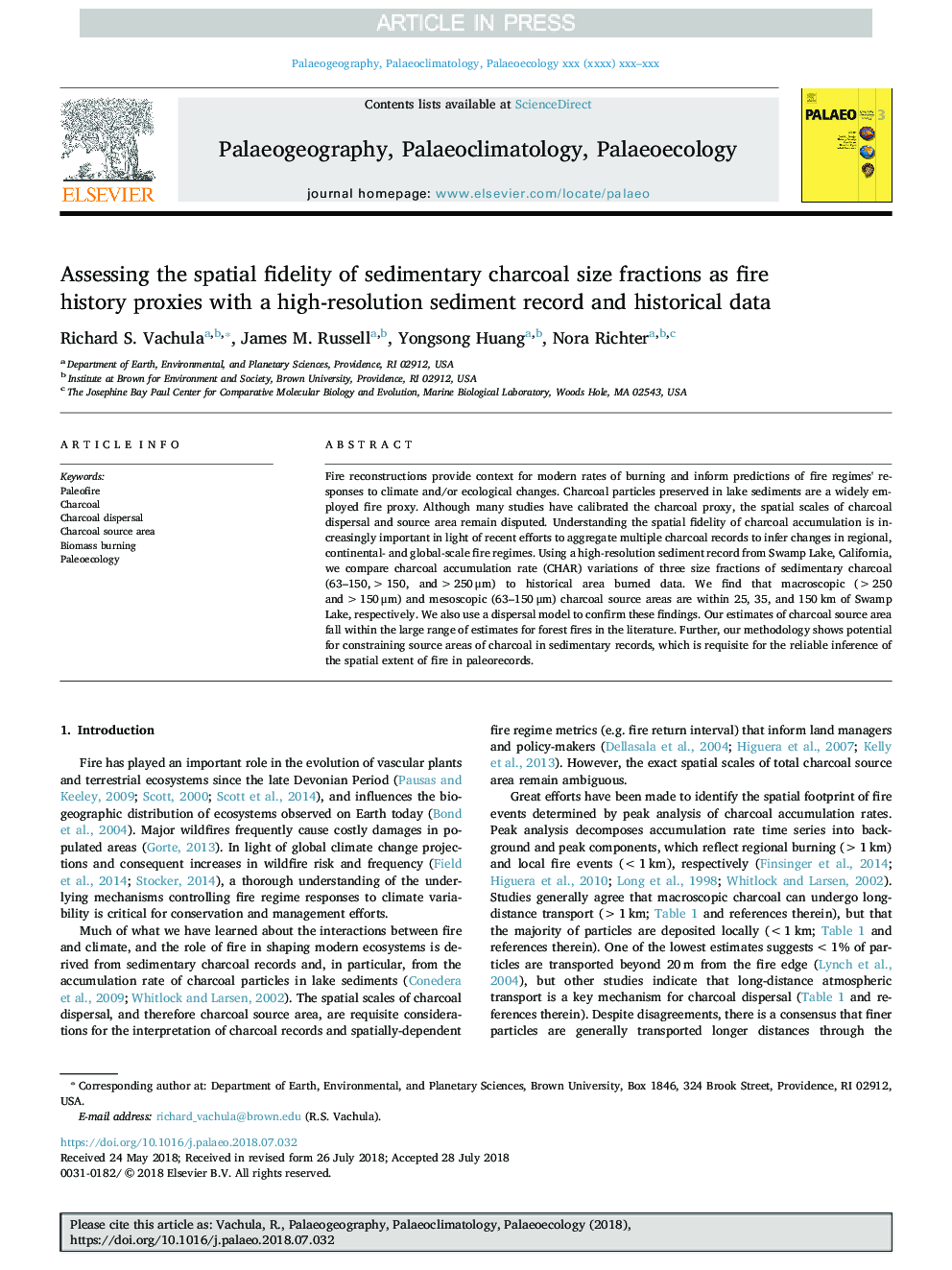| Article ID | Journal | Published Year | Pages | File Type |
|---|---|---|---|---|
| 8953059 | Palaeogeography, Palaeoclimatology, Palaeoecology | 2018 | 10 Pages |
Abstract
Fire reconstructions provide context for modern rates of burning and inform predictions of fire regimes' responses to climate and/or ecological changes. Charcoal particles preserved in lake sediments are a widely employed fire proxy. Although many studies have calibrated the charcoal proxy, the spatial scales of charcoal dispersal and source area remain disputed. Understanding the spatial fidelity of charcoal accumulation is increasingly important in light of recent efforts to aggregate multiple charcoal records to infer changes in regional, continental- and global-scale fire regimes. Using a high-resolution sediment record from Swamp Lake, California, we compare charcoal accumulation rate (CHAR) variations of three size fractions of sedimentary charcoal (63-150, >150, and >250â¯Î¼m) to historical area burned data. We find that macroscopic (>250 and >150â¯Î¼m) and mesoscopic (63-150â¯Î¼m) charcoal source areas are within 25, 35, and 150â¯km of Swamp Lake, respectively. We also use a dispersal model to confirm these findings. Our estimates of charcoal source area fall within the large range of estimates for forest fires in the literature. Further, our methodology shows potential for constraining source areas of charcoal in sedimentary records, which is requisite for the reliable inference of the spatial extent of fire in paleorecords.
Related Topics
Physical Sciences and Engineering
Earth and Planetary Sciences
Earth-Surface Processes
Authors
Richard S. Vachula, James M. Russell, Yongsong Huang, Nora Richter,
